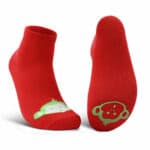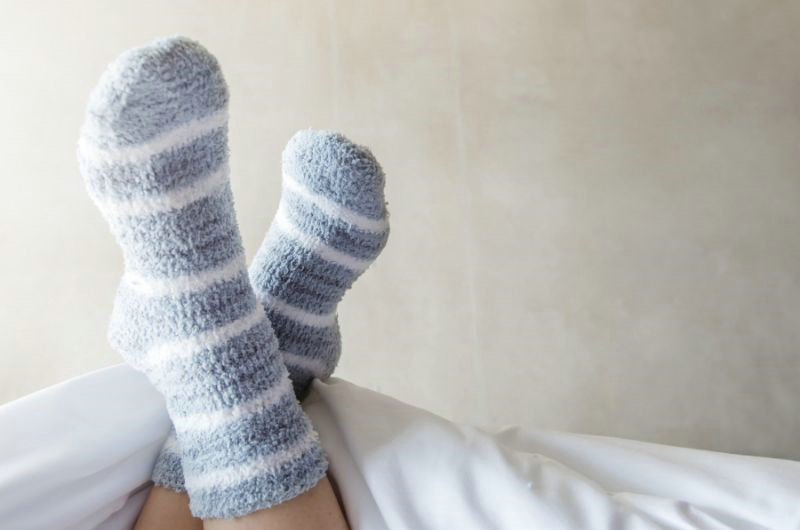
Key Takeaways
- Duration of use: The period you should wear compression socks varies. For daily wear, keep them on for the duration of your waking hours, like 10-12 hours, to improve circulation. After exercise, sport-specific guidelines suggest wearing them for a few hours to aid in exercise recovery.
- Medical conditions: If you’re using them for medical reasons, such as swelling or fatigue, your doctor might suggest longer periods. Sometimes they are recommended to be worn all day, only taking them off before bed.
- Levels of compression: Those new to compression socks often start with lower compression levels, typically between 15-20 mmHg. Gradually, you can move to higher levels like 20-30 mmHg if needed for increased muscle soreness relief.
- Replacing socks: To maintain effectiveness, it’s essential to replace your compression socks every 3 to 6 months, as the elasticity can degrade over time.
- Side Effects: Proper fit is crucial to avoid side effects. If your compression socks are too tight, they might cause discomfort or skin irritation.
Recommended Duration for Different Situational Use
The duration of wearing compression socks can vary greatly depending on the situation and intent of use. It is critical to consider the particular context to maximize the benefits to your ankles, blood flow, and overall leg health. Let’s explore how long you should wear your compression socks in different situations.
Daytime Use
During the day, you may wear compression socks to help support blood circulation in your legs, especially if you have a job that requires prolonged sitting or standing. With varying compression levels, it’s advisable to wear knee-high compression stockings for approximately 10-12 hours to alleviate the risk of venous insufficiency.
While Sleeping
Generally, it’s not recommended to wear compression socks while sleeping unless specifically advised by your healthcare provider. If prescribed for overnight use, often for certain medical conditions, the length and compression level should align with their guidance to ensure proper blood circulation without affecting your sleep quality.
During Exercise and Post-Workout Recovery
For athletes or during exercise, compression socks are typically worn during the workout and for a few hours afterward to aid muscle recovery. High compression level socks, usually ranging from 20-30 mmHg, can be worn during exercise, while a lower compression grade may be used for exercise recovery to enhance blood flow and reduce muscle soreness.
Research supports wearing compression socks during the full exercise session and then continuing to wear them for at least 4 hours afterward to maximize recovery benefits like reduced muscle soreness, improved blood flow, and quicker removal of lactic acid and other waste products.
However, some studies showed positive effects of wearing them for shorter durations, like 30-60 minutes post-exercise as well. The key seems to be wearing them immediately after exercise rather than the specific number of hours.
When Traveling, Especially on Long Flights
For Flights:
It is generally recommended to wear compression socks for the entire duration of a long flight, typically defined as flights over 4-5 hours. You can put the compression socks on before arriving at the airport and wear them throughout your travel journey until you reach your final destination.
Wearing them continuously helps prevent swelling, discomfort, and the risk of deep vein thrombosis (DVT) or blood clots that can occur from prolonged immobility during the flight. Some experts suggest taking short breaks from the compression socks every few hours by removing them briefly to allow your legs to recover before putting them back on.
For Other Travel:
For other modes of travel involving long periods of sitting, like road trips or train rides, compression socks can provide similar benefits and should be worn for the duration of those extended seated periods.
When not traveling but still being relatively inactive for long stretches, compression socks can be worn during the day and removed before going to bed at night.
Wearing Duration for Different Groups
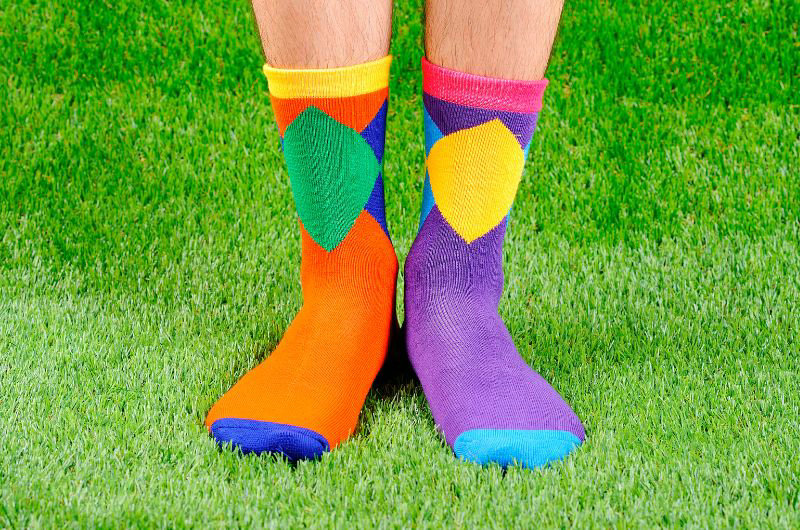
The length of time you should wear compression socks varies depending on your specific condition and needs. Your healthcare provider will often give the most accurate guidance on duration and compression level.
People with Varicose Veins
If you have varicose veins, wearing compression socks can be a pivotal part of your management strategy. A common recommendation is to wear them throughout the day, taking them off at night, unless otherwise directed by your doctor. Compression levels typically range from 15-20 mmHg to 30-40 mmHg, based on the severity of your varicose veins.
People with Swelling
For those dealing with swelling or edema, especially after surgery or due to poor circulation, compression socks should be worn as advised by your healthcare provider, usually for most of the day. They can effectively reduce swelling by aiding in venous return, with higher levels of compression prescribed if recommended by your healthcare provider.
People with Plantar Fasciitis
It’s advisable to wear compression socks for plantar fasciitis all day while active, putting them on first thing after waking up and removing them before going to bed at night, unless otherwise directed for your specific condition. Consistent daytime wear is recommended for managing plantar fasciitis pain and inflammation.
During Pregnancy
Pregnant individuals may be advised by their healthcare provider to wear compression stockings to help with swelling and improve circulation. It’s considered safe and effective to wear them during waking hours, and they can be a significant relief for feet and ankle pain. The compression level will depend on your specific health profile and your doctor’s recommendations.
Factors Influencing Wearing Duration
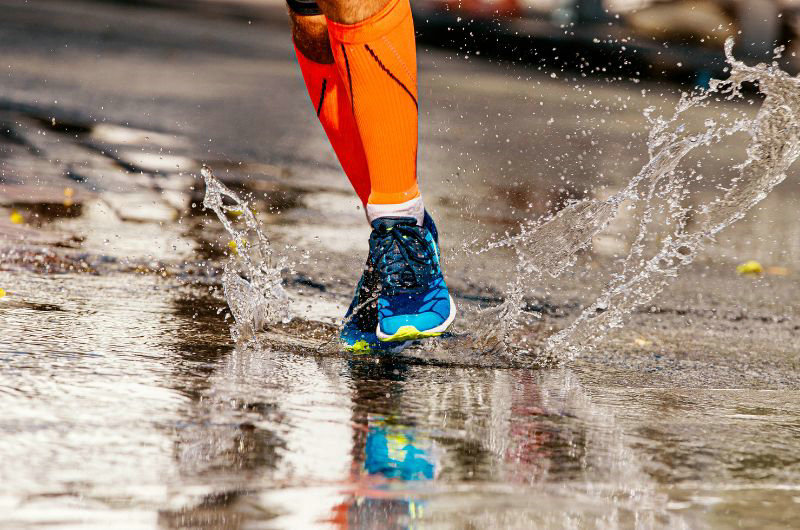
It’s important to consider various factors that influence how long you should keep them on. These factors include the pressure the socks exert, their length, and the materials they are made from.
Relationship between Pressure and Wearing Time
The compression level of your socks, measured in millimeters of mercury (mmHg), directly impacts how long you should wear them. Medical-grade compression typically ranges from 20-30 mmHg or higher and may require a prescription. In contrast, over-the-counter options with lower compression levels, such as 15-20 mmHg, can be worn for longer periods. It’s essential to follow the guidance of a healthcare professional to ensure the pressure is safe and appropriate for your condition.
Here is a table summarizing the relationship between compression sock pressure levels and recommended wearing times:
| Compression Level | Recommended Wearing Time |
|---|---|
| 15-20 mmHg (Light) | – All day while awake and active, around 12+ hours – Put on in the morning, remove before bed – Consider short breaks every few hours |
| 20-30 mmHg (Moderate) | – All day while upright and active, around 12+ hours – Put on first thing, remove before sleeping – Overnight wear usually not recommended unless directed by a doctor |
| 30+ mmHg (Firm) | – Wear times more likely to be specified by doctor for certain conditions – Daytime wear is more common, but overnight wear may be advised for severe cases |
| During Exercise | – Wear for the full duration of the exercise/activity session – Post-exercise, wear for 4+ hours to aid recovery |
| Travel/Immobility | – Wear continuously for the full duration of extended sitting/immobility like long flights |
Relationship between Length and Wearing Time
Regardless of the compression sock length (knee-high, thigh-high, etc.), the recommended wearing pattern is similar – put them on in the morning and wear them continuously throughout the day while awake and active, removing them before going to bed at night. The length is determined by the specific need but does not alone dictate a different wearing schedule in most cases.
Relationship between Materials and Wearing Time
The material of your compression socks impacts wear time by affecting comfort. A thin, breathable fabric may reduce skin irritation and allow for extended wear, whereas a less breathable material could cause discomfort or itching, which may require you to take breaks or shorten the duration of use. It’s crucial to choose a garment that balances effective compression with comfortable wear.
The following table has shown
| Material | Pros | Cons | Recommended Uses |
|---|---|---|---|
| Cotton | Breathable, moisture-wicking, soft feel similar to regular socks | May not be as durable or stretchy as synthetics | Everyday wear, office wear |
| Merino Wool | Temperature regulating, moisture-wicking, odor-resistant, soft | – | Outdoor activities, athletic wear |
| Nylon | Strong, durable, good compression and stretch | Not as breathable as natural fibers | Sports, athletic compression socks |
| Polyester | Durable, long-lasting, can be moisture-wicking in blends | – | – |
| Spandex/Elastane | Increases stretch and compression ability in blends | – | – |
| Common Blends | Cotton/Nylon/Spandex, Merino Wool/Nylon/Spandex, Nylon/Spandex | Combines benefits of different fibers | – |
Risks of Wearing too Long
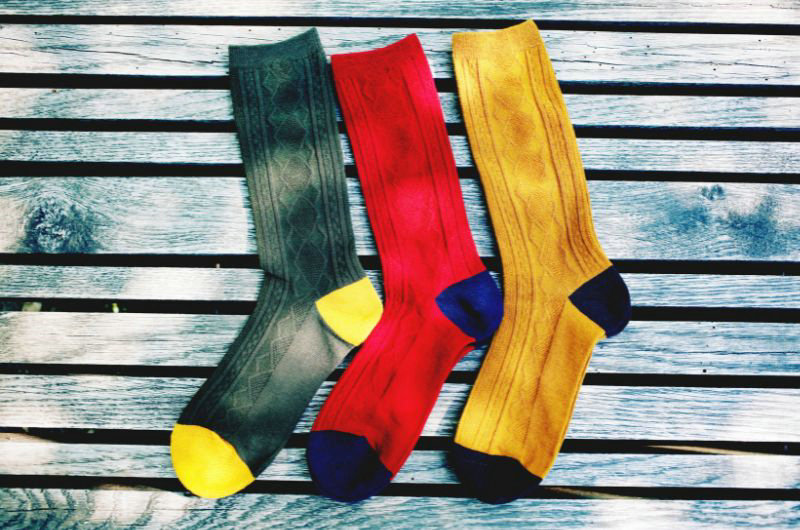
1. Skin Irritation, Redness, or Itching
Wearing compression socks for extended periods without taking breaks can cause skin irritation, redness, or itchiness, especially if the socks are of low quality or made of materials you may be allergic to.
2. Restricted Blood Circulation
While compression socks are designed to improve circulation, wearing them for too long or with the wrong size/compression level can potentially restrict blood flow and circulation in the legs. This “tourniquet effect” from excessive compression can be dangerous if it significantly cuts off circulation.
3. Bruising, Chafing, or Indentations
Prolonged wear of compression socks, especially ill-fitting ones, may cause bruising on the legs from the excessive pressure. The socks can also lead to chafing or leave indentations on the skin if worn for very extended periods without breaks.
4. Leg Achiness or Discomfort
Some people may experience leg achiness, cramping or general discomfort if compression socks are worn for too many hours continuously without giving the legs a “breather”.
5. Bunching, Twisting, or Improper Fit During Sleep
If worn overnight while sleeping, compression socks can potentially become bunched, twisted or improperly fitted as you move around, leading to circulation issues.
When to Stop Wearing Compression Socks
Health Indicators: If you experience discomfort, skin irritation, or loss of circulation, it’s crucial to remove your compression socks immediately. These could be signs that the socks are too tight or you have a condition that contraindicates their use.
Doctor’s Advice: Always follow your doctor’s recommendations regarding duration and frequency of wear. If your doctor advises wearing compression socks for a specific period after surgery or an event like a long flight, don’t continue to wear them beyond this period.
Changes in Conditions: If the medical condition for which you’re wearing compression socks improves or resolves, consult your healthcare provider to determine whether continued use is necessary.
- Swelling: If you no longer experience swelling, the need for compression may have passed.
- Recovery: Post-recovery from procedures or improvement in venous function might reduce your need for additional compression.
Routine Evaluation: Regularly evaluate your need for compression socks based on your health status, and consult your healthcare provider for reassessment.
Comfort and Fit: Ensure that your compression socks fit well. They should be snug but not overly tight. If they become uncomfortable, looseness or bunching occurs, or there are changes in your leg size, it’s time to get reassessed for a different size or compression level.
Remember, wearing compression socks is a form of therapy, and like all therapeutic treatments, it requires monitoring and adjustment. Your well-being is paramount, and wearing compression socks when they are no longer needed or in the wrong way can cause more harm than good.

